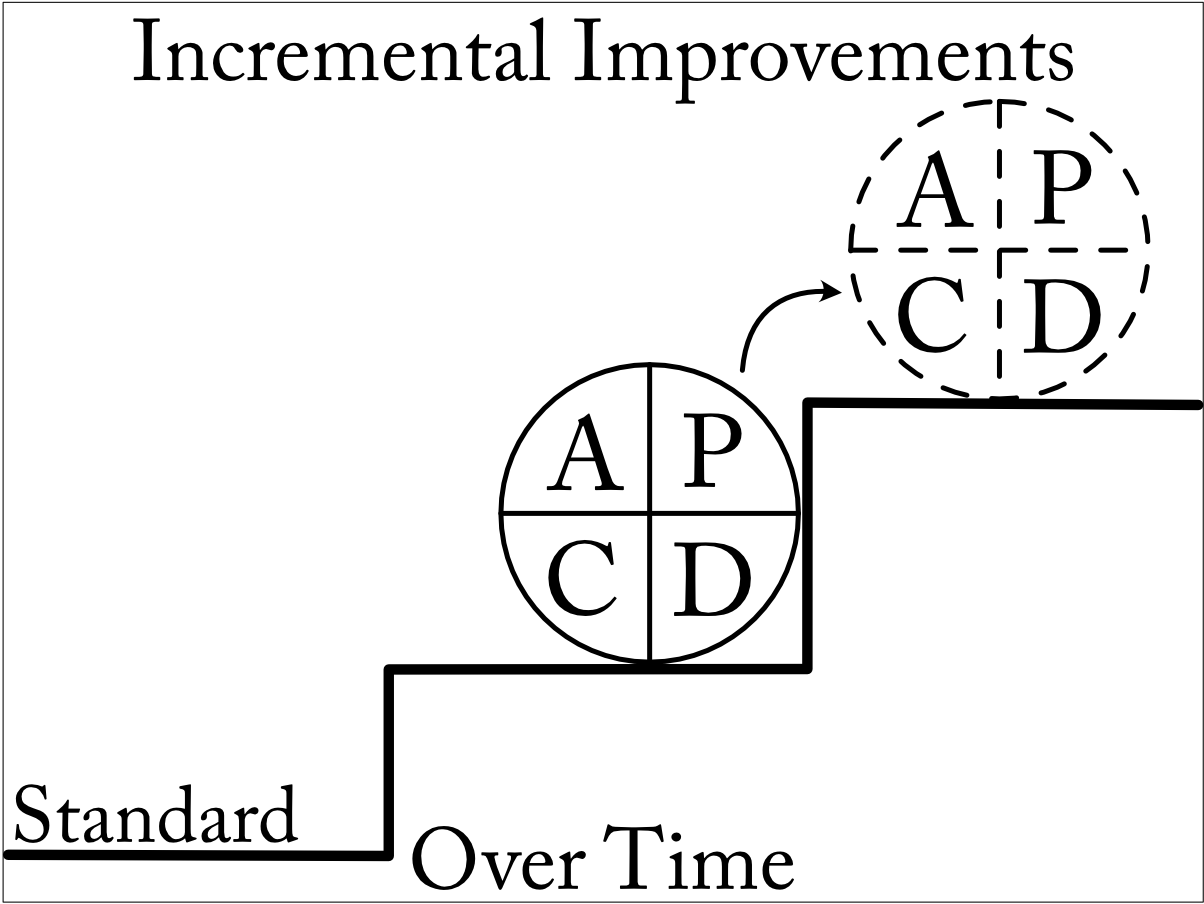Have you heard the term “feedback loop”?
You’ve probably already been asked to give feedback somewhere. Every survey you’ve ever completed is giving feedback.
Whether that feedback is used for anything is a different story.
However, when the information you give to someone in the form of feedback is used to change something on their end, that is a feedback loop.
What is the PDCA feedback loop? And how do you use it in your business?
Let’s explore!
PDCA
PDCA stands for Plan, Do, Check, Act.
It’s a simple feedback loop of sorts.
You plan to take some action. You DO that action for some amount of time gathering important information. You check that information against your expectations. Then you act based on the information you gathered.
There are many different loops one can define regarding a feedback loop. PDCA is just one of them.
In my day-to-day operations, I do a Plan, Do, Reflect loop. Where Reflect is basically a check and then I brainstorm what to do next for the planning to start all over again.
Whatever loop you call it, the result is the same. Over several cycles of feedback, you should see a marked improvement in whatever outcome you are trying to achieve.

Feedback
Feedback (and how you respond to it) is the most critical aspect of this loop.
Sure you can plan and do all day, but without valuable feedback that you can use, how will you know what to change or keep the same?
Feedback can come in the form of metrics of your business (website clicks, video likes, and mail subscriptions). But it can also come directly from your customers.
If you ask for feedback, the key is to be prepared to get information that isn’t all puppies and rainbows. It’s OK to get feedback that suggests you change something.
It’s hard to hear.
Your first reaction might be defensive.
But recognize it as what it probably is: an opportunity to improve.
Though, it could highlight problems.
You can’t get better if you don’t know what you’re doing wrong.
The Feedback Loop
Let’s look at that loop again:
Plan, Do, Check, Act.
If all you ever do in your business is plan and execute things, and never really look at the results, you could be doing more things that don’t net you results and ultimately be wasting your time.
If you’ve ever heard of the 80/20 rule, without using feedback, you can quite easily fall afoul of that rule.
It’s easy to plan things. It’s easy to just do a bunch of things.
It’s much harder to look at the results and objectively evaluate the results of the actions.
It’s OK to need to make adjustments.
But also, if things are going along great, maybe you don’t need to make adjustments just yet. But if you don’t actually look at the results as a direct effect of your actions, then you may never know what works and what isn’t. And you may inadvertently stop doing the thing that was working.
PDCA has become the “term” used to indicate continuous improvement in Lean. It’s one of the processes used to set and raise standards.
Sure, it’s an acronym. But the important part is that you use the feedback loop.
Feedback Loop Duration
Often business is all about trying things to see if they work, and then making adjustments and trying again.
How long should you try something before making adjustments?
It depends.
What are you trying? How long will it take to get feedback? What kind of “data” are you really looking at?
Let’s take the act of using TikTok as a social media platform for your business.
Let’s say you post 1 video a day for 21 days (3 weeks).
Is that enough to evaluate the money-making potential for your business on TikTok? No, it isn’t. Especially if you are just getting started. There are so many things you need to look at and adjust when it comes to social media. For example, your content matter, video duration, post time, hashtags, posting frequency, hooks, SEO, and so much more.
But, take that same 21 TikTok posts that you did over 21 days. You can probably get a good enough idea if your personal workflow will work for you indefinitely, or if you need to change something.
So, while it is critical that you are using the feedback loop. It’s also important that you don’t make decisions based on feedback too quickly. But don’t wait too long either.
Unfortunately, there is no right answer to what is too fast or too slow.
The more that can affect the metric or feedback that you are receiving, the more data you usually need to get a good picture of what is actually going on.
And, if you are getting feedback on a product, one out of 100 negative reviews might be nothing to make changes over. But it could also depend on what that one complaint or suggestion was. If you are designing and selling WordPress themes and you get an ADA complaint, perhaps you should address it.
Conclusions
One of the most important habits you can get into is enacting feedback loops in your business. Set aside some time to look at metrics.
Ask yourself what really matters, and what things your actions directly affect the metrics. Can you change something to improve the metrics?
Don’t get stuck in a Plan Do, Plan Do rut.
Don’t act too hastily. A single data point does not a trend make.
Don’t let unproductive actions sap your time for too long though.
Be brave and change things. Just make sure you measure whether the change you made, made a difference.